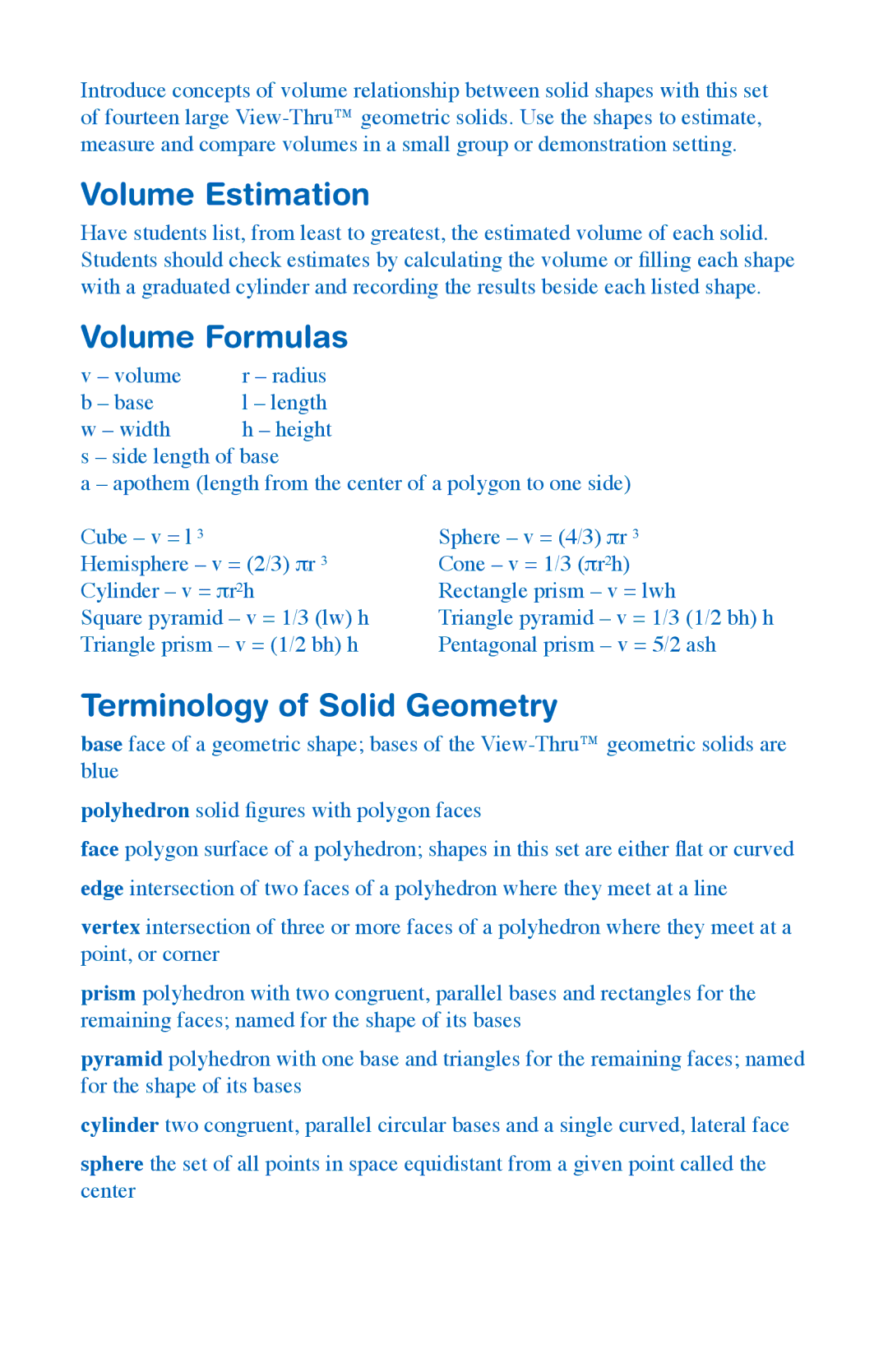Introduce concepts of volume relationship between solid shapes with this set of fourteen large
Volume Estimation
Have students list, from least to greatest, the estimated volume of each solid. Students should check estimates by calculating the volume or filling each shape with a graduated cylinder and recording the results beside each listed shape.
Volume Formulas
v – volume | r – radius |
b – base | l – length |
w – width | h – height |
s – side length of base
a – apothem (length from the center of a polygon to one side)
Cube – v = l ³
Hemisphere – v = (2/3) πr ³ Cylinder – v = πr²h
Square pyramid – v = 1/3 (lw) h Triangle prism – v = (1/2 bh) h
Sphere – v = (4/3) πr ³
Cone – v = 1/3 (πr²h)
Rectangle prism – v = lwh
Triangle pyramid – v = 1/3 (1/2 bh) h Pentagonal prism – v = 5/2 ash
Terminology of Solid Geometry
base face of a geometric shape; bases of the
polyhedron solid figures with polygon faces
face polygon surface of a polyhedron; shapes in this set are either flat or curved edge intersection of two faces of a polyhedron where they meet at a line
vertex intersection of three or more faces of a polyhedron where they meet at a point, or corner
prism polyhedron with two congruent, parallel bases and rectangles for the remaining faces; named for the shape of its bases
pyramid polyhedron with one base and triangles for the remaining faces; named for the shape of its bases
cylinder two congruent, parallel circular bases and a single curved, lateral face
sphere the set of all points in space equidistant from a given point called the center
